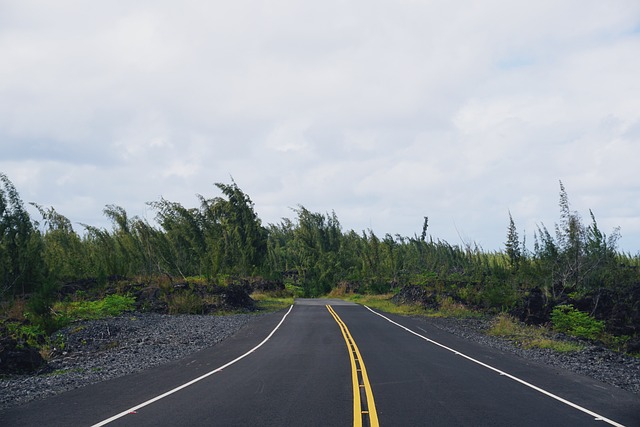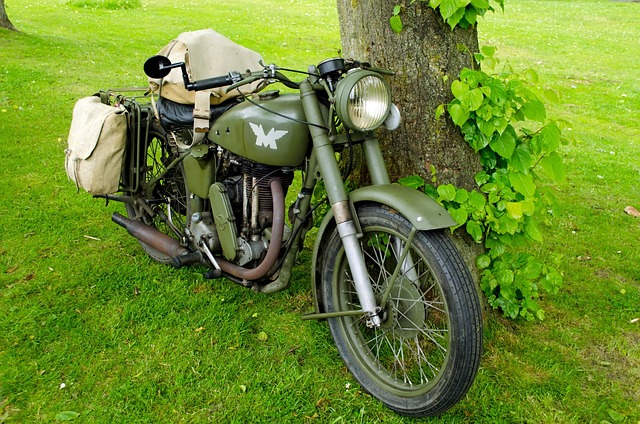Rain can be a bane or a boon for motorcycle owners; it can cause rust and damage, but also clean and protect certain components. You may have heard that you shouldn’t leave your motorcycle in the rain, but is this really true?
In this article, we will explore what happens to motorcycles when they are exposed to the elements of rain, how best to keep them safe during downpours, and why some riders actually enjoy getting caught in a thunderstorm! We’ll look at the different types of rainfall and their effects on motorcycles, as well as offer tips on how to store your bike when wet weather is forecasted.
Finally, we’ll examine why some riders believe that exposing their bikes to the rain can actually be beneficial. Let’s jump in and take a closer look at riding and storing motorcycles in wet conditions.
Key Takeaways
- Rain can cause rust and damage to motorcycles.
- Regular cleaning and maintenance with suitable solutions is essential to prevent damage.
- It is important to cover the bike with a waterproof covering or tarpaulin during a rainstorm.
- Removing or covering components vulnerable to moisture damage can help protect the motorcycle.
Effects of Rain on Motorcycles
You shouldn’t leave your motorcycle in the rain, as it can cause some serious damage! Rainwater contains minerals that can corrode metal components and cause rust. Moisture can also penetrate electrical systems and lead to shorts or complete failure of the system.
Additionally, when moisture combines with dirt on a motorcycle, it forms mud which can settle into crevices and create a breeding ground for bacteria and mold growth. To avoid such problems, regular cleaning with suitable cleaning solutions is essential, as well as proper riding techniques such as avoiding large puddles when possible.
If you must ride in wet conditions, make sure to clean your bike afterwards using appropriate methods to ensure its longevity.
Protective Measures
Protective measures can be taken to ensure that your motorcycle remains safe during a rainstorm. First and foremost, you should cover your bike with a waterproof covering or tarpaulin to protect it from the elements.
Additionally, if any components of the bike are vulnerable to moisture damage, such as the electrical system, consider removing them or covering them with a protective layer.
Taking these steps will help keep your motorcycle in good condition during a rainy day.
Covering the bike
It’s a no-brainer that covering your bike in the rain is a must; after all, ‘a stitch in time saves nine.’ An effective way to protect your motorcycle from weathering is to cover it with a tarp or other waterproof material. Here are five things to consider when doing so:
- Make sure the tarp is large enough to cover the entire bike and any luggage or accessories you may have attached.
- Securely attach the tarp with bungee cords or rope, making sure that it won’t slip off during windy conditions.
- Replace tires if they show signs of wear and tear due to exposure to moisture over time.
- Clean the chain regularly as part of routine maintenance in order to prevent rusting caused by water droplets settling on parts of the bike.
- Check for mold growth around areas where air circulation is limited due to covering with a tarp. This can be prevented by regularly removing the tarp and allowing airflow into these areas.
Removing or covering components
To ensure your bike is well-protected, consider removing or covering any components that are vulnerable to rain and wind. This will help prepare the motorcycle for riding in wet conditions, as well as keep it safe when parked outside. Before heading out on a ride, check the following items and make sure they are secure and covered:
| Component | Action | Material Used |
|---|---|---|
| Mirrors | Cover | Plastic bag |
| Saddlebags | Remove | – |
| Tank Bag | Cover | Rain cover |
| Battery | Disconnect | – |
| Exhaust Pipes | Wrap with tape | Cloth Tape |
When packing gear, double check that all components have been secured properly to prevent water from entering sensitive areas of the bike. Additionally, inspect any exposed wiring or electrical components for wear or damage before hitting the road. Taking these steps will ensure you stay safe while riding in wet weather conditions and protect your bike from any potential harm caused by rain exposure.
Tips for Motorcycle Storage
You should store your motorcycle in a sheltered space to ensure it doesn’t get damaged by the rain. This means that you should invest in a waterproof cover for your motorcycle when storing it outdoors, as well as ensuring that the ground is dry and level.
Additionally, consider using a waterproofing product to keep components such as the battery from being exposed to moisture or condensation. Battery maintenance is essential when storing your motorcycle in wet environments; you should regularly check the charge of the battery and top up if necessary.
If possible, try to store your bike indoors instead of leaving it outside during storms or periods of heavy rain. Investing in an indoor storage shed or garage can provide additional protection and peace of mind during inclement weather conditions.
Impact of Different Rain Types
As you shield your bike from the storm, you can see each drop of rain hitting the ground differently. Some pelt down with force while others trickle softly. It’s important to be aware of how different types of rain affect your motorcycle and take precautions accordingly. Here are five things to consider:
- The amount of acid in the rainfall can cause corrosion damage, so if you live in an area with highly acidic rain, it’s especially important to follow cleaning procedures after riding in the rain.
- If there’s lightning during a thunderstorm, it may cause electrical interference that could damage sensitive parts on your bike.
- Heavy rainfall can cause water buildup and rusting if left untreated for long periods of time.
- Foggy conditions create high levels of humidity, which can accelerate rust formation on exposed surfaces.
- Pollutants like dust and dirt carried by windy rainshowers can stick to metal surfaces and contribute to corrosion over time unless proper rust prevention techniques are used.
Maintenance After Rain Exposure
Now that you understand the different types of rain and their potential impacts on your motorcycle, it’s important to know how to properly maintain your bike after exposure to wet weather. As a rule of thumb, engine protection should be at the top of the list when considering maintenance after a ride in the rain. It’s also essential to pay attention to tire care as well. To ensure optimal performance, take a look at this table which outlines key maintenance tips for each component:
| Component | Maintenance Tip |
|---|---|
| Engine Protection | Clean air filter |
| Lubricate cables | |
| Tire Care | Check tire pressure |
| Inspect tread wear |
Benefits of Rain for Motorcycles
Though rain can negatively affect motorcycles, it also brings certain benefits. Rain helps to keep the motorcycle clean and free of dirt and debris that can accumulate over time. It also provides a great opportunity for waterproofing solutions, such as coatings and sealants, to be applied. These solutions can help protect the bike from rust and corrosion damage. Additionally, rain helps cool down engines during long rides or after running them hard in hot weather. This can serve as an important engine protection measure that’ll help extend its lifespan.
- Cleaning Benefits:
- Helps remove dirt and debris
- Opportunity for waterproofing solutions
- Engine Protection Benefits:
- Cool down engines during long rides
- Prolong engine life
Tips to Prevent Damage During Rainy Rides
Riding in the rain can be tricky, but with the right precautions, you can stay safe and protect your bike! Taking preventive care is key to keeping your motorcycle in good condition during rainy rides.
Make sure to check tire pressure regularly – low tire pressure can cause hydroplaning on wet roads.
Additionally, make sure to check the fuel filter for any debris or rust that may have accumulated over time. Keeping your fuel in good condition will ensure a smooth ride even when the conditions are less than ideal.
Lastly, double-check all lights and signals before starting out – visibility is of utmost importance during rainy rides.
Taking these simple steps will help you remain safe while also protecting your motorcycle from damage caused by inclement weather.
Frequently Asked Questions
How much does it cost to store a motorcycle?
Storing your motorcycle indoors can be costly, but it’s worth the money for weather proofing. Imagery of rust and corrosion paint a vivid picture of the potential damage rain can cause. Investing in indoor storage will ensure protection from storms and keep your bike looking pristine. Consider the cost of indoor storage against weatherproofing to make an informed decision.
What is the best way to start a motorcycle after exposure to rain?
To protect your motorcycle from rain, you should waterproof the engine and paint. After exposure to rain, start your motorcycle by priming the air filter and running the engine at a low RPM for a few minutes. This will help dry out any moisture in the system.
Is it safe to ride a motorcycle during a thunderstorm?
No, it is not safe to ride a motorcycle during a thunderstorm. In fact, the National Weather Service estimates that lightning strikes cause an average of 8 deaths and 200 injuries in the U.S. annually. Riding during a thunderstorm puts your engine at risk of damage from water, while tire traction decreases with standing water on roads. Stay safe and avoid riding during storms.
Is there any special gear I should wear when riding in the rain?
When riding in the rain, it’s important to wear wet weather gear such as waterproof boots and a rain suit. Additionally, you should check your bike for any rainy day maintenance that needs to be done before heading out.
Is there any way to reduce the effects of rain on my motorcycle?
You can reduce the effects of rain on your motorcycle by waterproofing its engine and preventing rust. Use products designed for this purpose to ensure long-term protection.
Conclusion
You can leave your motorcycle in the rain, but it’s important to take protective measures first. Choose a covered area and cover your bike if possible. Then, make sure to regularly check on it and maintain it after exposure to the rain. While some types of rain may have more damaging effects than others, investing in proper maintenance for your motorcycle will help prevent any long-term damage. Plus, don’t forget that a little bit of rain can actually be beneficial for your ride! By taking these steps now, you’ll be able to keep enjoying those rainy rides with confidence and ease.



